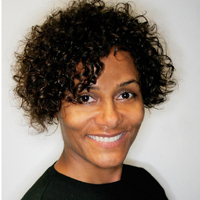Chastened Vice Still Has Lessons For Broadcast

AMSTERDAM — Digital publishers may have faced a violent reckoning with economic realities over the last two years, but they still have important insights for broadcasters.
That much was clear in a panel here Sunday that questioned whether such established digital brands like Vice and Refinery29 might be “the new broadcasters.” Probably not, is the short answer. But their skills in brand building and cultivating audience relationships are among those broadcasters could stand to emulate.
Vice, for instance, maintains an audience panel of some 40,000 people across the U.S. and U.K. called “Vice Voices” that the brand is continuously tapping for feedback on specific shows and content.
“We don’t make commission decisions, but we look for what are the key themes,” said Tamara Howe, managing director of Viceland and Vice TV production EMEA. “We take those subjects and develop off the back of them.”
Refinery29 has its own such panel of 10,000-plus women in the U.S. and U.K. “We talk to them every single day,” says Kate Ward, president, Refinery29 International. But she cautions that “data without insight is not good,” and editorial teams must get matched with those insights to pivot content decisions intelligently, aligned with what the audience is actually looking for.
“Listen to the audience,” says Ben Cohen, CEO of PinkNews, which courts younger LGBTQ viewers on social platforms like Snapchat with its short video content. “Don’t just assume what you make is what people want to watch.”
PinkNews is constantly iterative around what it’s hearing from its audience, Cohen says. For example, a one-off retelling of a fairy tale with an LGBTQ lens that ran on Snaphat was a breakaway hit, prompting an entire series of videos to follow.
As PinkNews interacts daily with its Snapchat and TickTock viewers, “we would change things three or four times a day,” Cohen says. “I’m not sure broadcasters quite do that.”
Responding to the worldwide school climate protests set off by 15-year-old Swedish student Greta Thunberg, Vice centered an ongoing series of Friday Snapchat Discover posts on Thunberg and the movement. That, in turn, evolved into a Vice documentary, Make the World Greta Again.
Howe says that Vice’s multi-divisional structure (which includes digital publishing, an in-house creative agency, Vice Studios and its TV channel, Viceland) enabled that trending content to evolve as it did, percolating more quickly from social content into full-fledged documentary.
“Having that portfolio of businesses allows us to spread the opportunity,” Howe says.
She’s also speaking from a chastened Vice. Under CEO Nancy Dubuc, the brand shaved off 10% of its staff — or 250 employees — in its last major round of bloodletting in February. Dubuc has been introducing more discipline in the once-swaggering, millennial-directed brand, reorganizing its numerous global outlets and verticals around core lines of business.
Howe says Dubuc has ushered in real accountability in those business lines and a shared strategy. “We’re moving closer toward profitability as a result,” she says.
It’s also focusing on its core relationship with its audiences, one predicated on a larger sense of purpose underlying the enterprise where it finds its most resonant connection with audiences.
Refinery29 shares a similar M.O. with its audience. “Refinery has a clear message and purpose, and we want to make a difference in the real world,” Ward says, noting that translates into all of its content.
“It has to be real,” she says. “It has to be good stories that make an impact and have purpose.”
For more IBC 2019 coverage, click here.
































Comments (0)